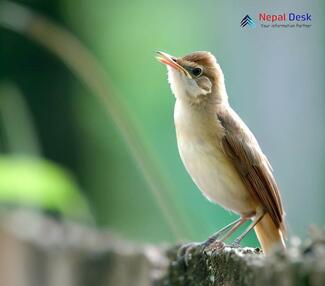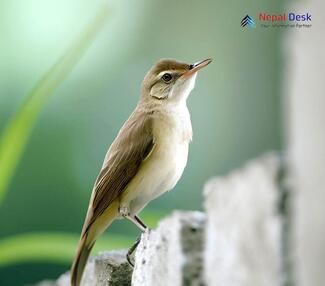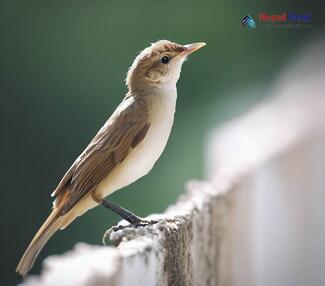The world of birds brings us a fascinating array of species, each with its own unique characteristics, behaviors, and habitats. One such species, the Oriental Reed Warbler (Acrocephalus orientalis), continues to draw the attention of bird enthusiasts and conservationists alike. In this blog post, we'll explore the details of this remarkable bird and shed light on its presence in the beautiful country of Nepal.
Characteristics of the Oriental Reed Warbler
The Oriental Reed Warbler is a medium-sized warbler measuring about 16-18 centimeters in length, distinguishable by its elongated body, a long bill, and simple yet elegant brown plumage that allows it to blend seamlessly into its surroundings. Its distinct song can be described as a melodic, sustained series of notes which often resonates around its natural habitat.
Belonging to the Acrocephalus family of birds, which comprises over 30 known species mainly prevalent in Europe, Asia, and Africa, these warblers are named after their affinity toward reedbeds as preferred nesting grounds. The Oriental Reed Warbler typically favors freshwater wetlands with dense tall vegetation such as reeds and sedges—perfect locations for them to find ample insects for sustenance and build their intricate nests.
Presence in Nepal: Distribution and Seasonal Patterns
Nepal hosts a diverse range of bird species due to its dramatic landscapes and varied ecological conditions stretching across the Terai lowlands up to the high Himalayas. The Oriental Reed Warbler finds sanctuary in this nation during certain parts of the year as a migratory visitor from its breeding areas further north.
In Nepal, the bird usually arrives during late April or early May with peak migration occurring between May and June. After spending their breeding season further north across Asia's eastern expanses—Russia, China, Korea, and Japan—these warblers journey south, arriving in Nepal once more during autumn migration from late August to October.
Notable bird-watching hotspots for the Oriental Reed Warbler sightings within Nepal include the Koshi Tappu Wildlife Reserve, Chitwan National Park, and Jagdishpur Reservoir—among many other prime locations for observing the country's abundant birdlife.
Importance of Conservation and Education
As the Oriental Reed Warbler relies heavily on wetland habitats, which are often threatened by drainage projects or conversion into agricultural plots, it's essential to emphasize the importance of habitat preservation efforts. Educating communities about the value of wetlands for both biodiversity and natural flood protection should be a priority. By raising awareness of the Oriental Reed Warbler's unique characteristics and its status as a migratory visitor to Nepal, we hope to contribute positively towards ongoing conservation efforts.
In conclusion, the Oriental Reed Warbler is a captivating species that holds a special place in Nepal's rich avifauna diversity. By gaining a deeper understanding of this bird's characteristics and appreciating its presence within Nepal's borders during critical parts of its life cycle, we can celebrate its beauty and ensure its continued survival for future generations of bird enthusiasts.




